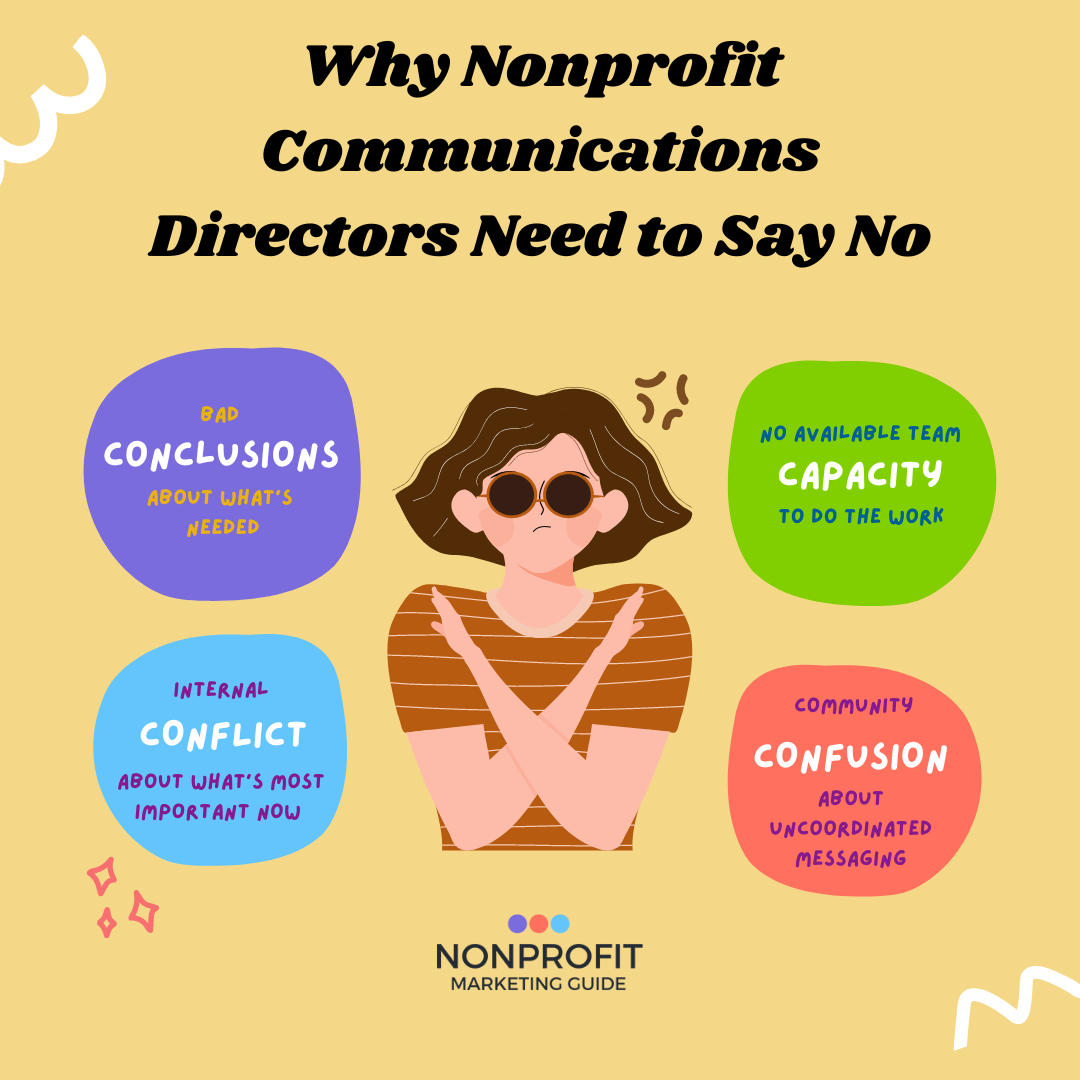
We coach nonprofit communications staff on how to say No to work requests all the time (or not yet, or not until . . . we have a whole list of ways to say no.)
You may think, “What’s wrong with executives and programmatic leaders setting communications and marketing priorities? They are the bosses and the mission-oriented staff who know best. Comms is just a service! What is this nonsense about communications staff saying No to work requests?!”
While this may be true in a nonprofit fairytale land where the unicorns fly free, it is very far from reality in the nonprofit sector.
We see four big reasons why communications staff need the ability to say No to work requests: Conclusions, Capacity, Conflict, and Confusion.
1. Conclusions
Leaders and other staff often reach their own conclusions about what communications work is needed without understanding best practices. Instead of coming to communications staff with goals to implement (“increase attendance”) they come with conclusions (“we need a flyer”). Those ideas are often misguided and wasteful.
2. Capacity
When everyone can ask for whatever they want, whenever they want it, there is no check on the capacity of the communications staff to meet those needs. They are left to choose between sacrificing quality, working overtime, etc. Non-communications staff grossly underestimate how long good comms work takes to produce.
3. Conflict
Program leaders focus on their own programs and rarely have the big picture of what all the other programs are also asking for. This leads to conflict because you only have so much space on the home page, in the email newsletter, etc. Comms staff are often expected to “just make it work” instead of executives making strategic choices between their own programs.
4. Confusion
Many programs within a nonprofit have the same or overlapping target audiences. Without coordination and appropriate timing of messaging, the people you are communicating with will be confused by too many messages and even conflicting messages received simultaneously from your organization.
Strategy and management expert Michael Porter said, “The essence of strategy is choosing what not to do. You must set limits on what you’re trying to accomplish.”
If nonprofit managers can’t set those limits and be strategic on behalf of their communications staff, then communications directors need to do it themselves.
You can learn more about why nonprofit communicators have difficulty saying No in the 2023 Nonprofit Communications Trends Report.






